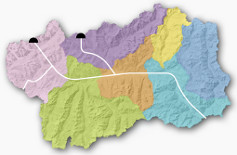Roman Architecture
In the first century before Christ, after defeating the native population, the Romans began to urbanise the conquered territory: they organised the land, charted the road networks, connecting the Little and Great Saint Bernard Alpine passes with the The Consular road to Gaul and founded the town of Augusta Praetoria (Aosta). This is how the five centuries of Roman rule began in the Aosta Valley.
Augusta Praetoria, door to the Alps
Arch of Augustus

This monument is Aosta's landmark. It was built in 25 BC, the year in which Augusta Praetoria was founded, in honour of Emperor Augustus' victory over the Salassi.
Porta Praetoria
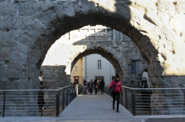
This was once the main entrance to the town. It has two parallel arches 12 metres apart, each with three passages: a central one for vehicles and two side ones for pedestrians.
Forum and cryptoporticus
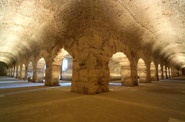
The cryptoporticus which was part of the Forum complex is a semi-subterranean gallery supported by strong arches.
Roman theatre
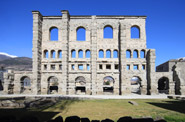
The impressive 22-metre high southern façade can be seen from the theatre which would have held three or four thousand spectators.
The city walls
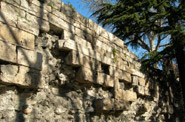
The city walls of Augusta Praetoria reached around 7 metres in height and delineated a rectangle of 724 x 572 metres.
The surrounding towers
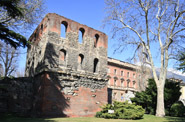
Twenty quadrangular towers stood at the corners of the city walls and all along their perimeter at regular intervals.
Roman bridge
-185X122.jpg)
This single arch bridge was built at the end of the first century BC over the river Buthier. which changed its course a few centuries after due to a flood.
Roman Villa
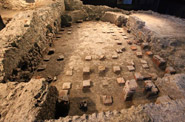
This villa, built outside the city walls during the Late Roman Republic, includes a residential area with a spa facility and a rustic area.
Burial ground
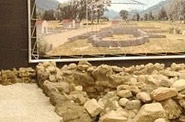
The necropolis was used both in Roman times and in the Paleochristian period for pagan and Christian burials.
Porta Decumana
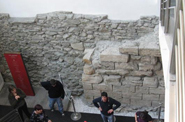
This gate was demolished in 1812 but the remains of the towers which stood alongside it can still be seen.
Roads and bridges: the great works of engineering
Pondel aqueduct-bridge

The bold aqueduct bridge of Pondel, 52 metres high, crosses with a single arch the Grand-Eyvia creek in the valley of Cogne.
Pont-Saint-Martin Bridge
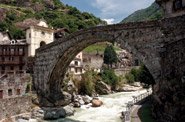
One of the most beautiful and best-conserved bridges of the Roman world and the biggest with only one span.
The consular road to Gaul

Amazing traces of engineering work can be found on the consular road to Gaul: supporting walls, bridges and excavations in the rock.
Arch on the road to Gaul

In Donnas, the stretch of paved road lies below an arch which is cut into the rock and features a carefully worked archway.











